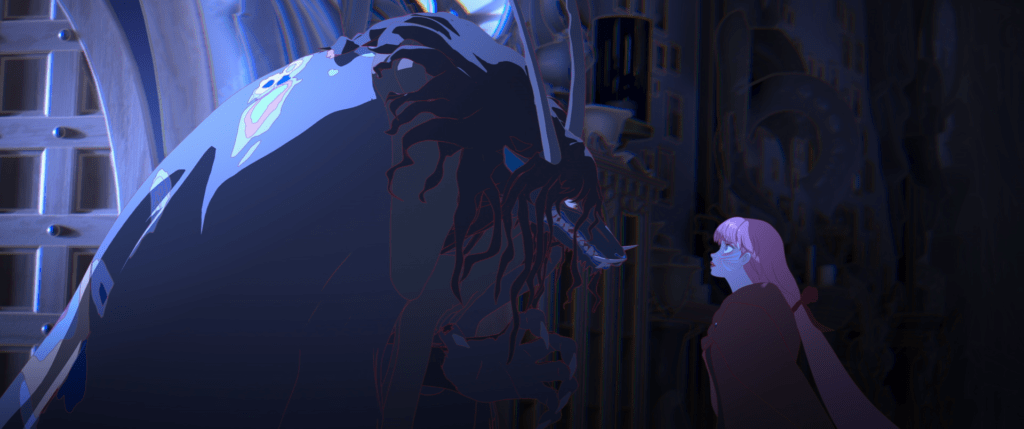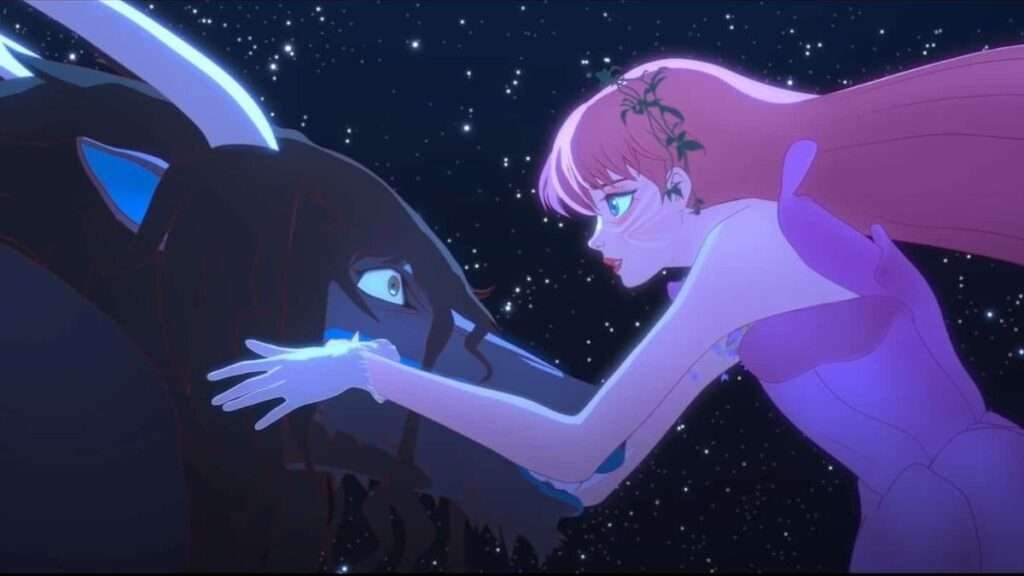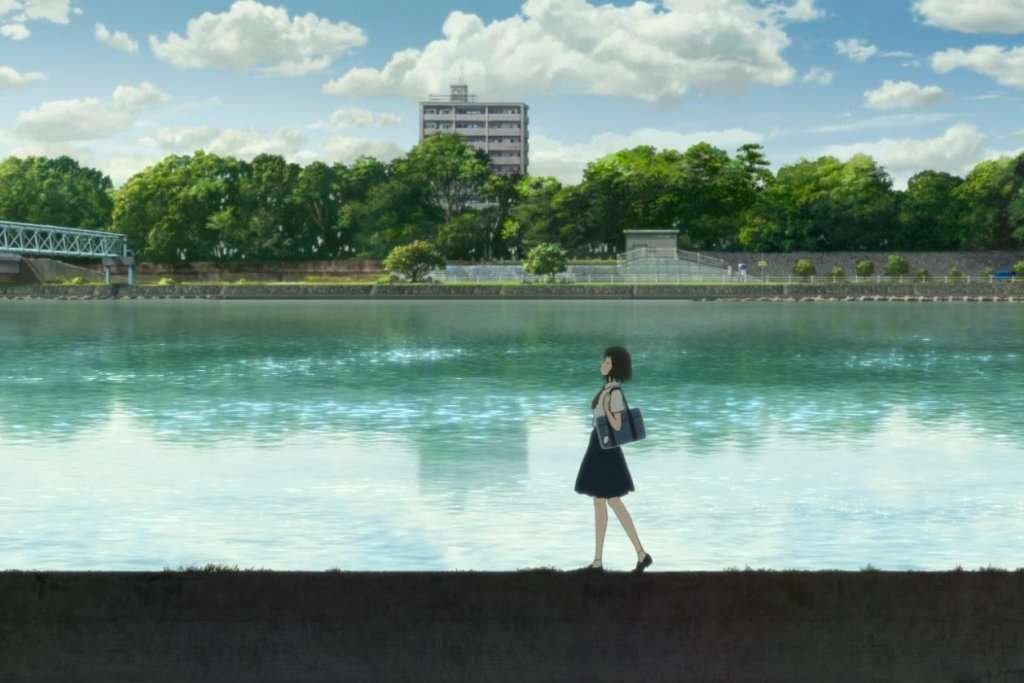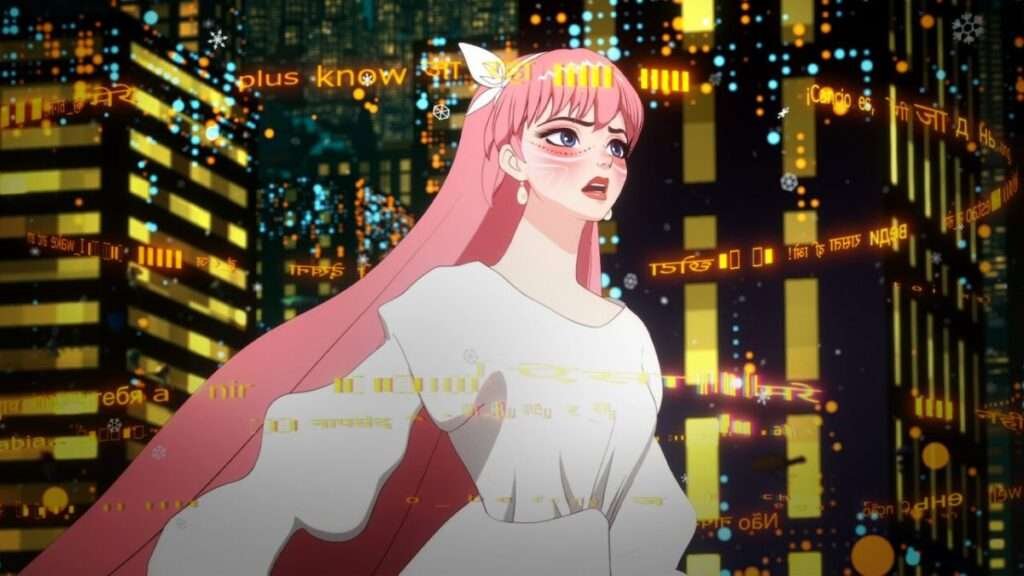‘Belle’: A Cinematic Masterpiece Blending Reality and Virtuality

In the realm of contemporary Japanese cinema, a film has emerged that transcends conventional storytelling, seamlessly weaving the digital and physical worlds into a mesmerizing narrative. Directed by the visionary Mamoru Hosoda, “Belle” (known as “Ryū to Sobakasu no Hime” in Japanese) stands as a testament to the boundless possibilities of animation, technology, and human emotion.
A Tale of Two Worlds
At its core, “Belle” is a sentimental coming-of-age story that revolves around Suzu. A shy high school student having trouble grappling with her identity and her place in the world after her mother recently passed away. However, Suzu’s life takes an unexpected turn when she enters “U”. A vast virtual landscape where users can assume unique avatars and interact with others. As she transforms into her avatar as “Belle” for the first time, she becomes a sensation overnight. From then on, Suzu embarks on a transformative journey of self-discovery, love, and courage.
The Borrowed Concept of ‘Belle’
Within the film, Hosoda masterfully reimagines the timeless tale of “Beauty and the Beast,” infusing it with contemporary nuances and innovative twists that resonate with modern audiences. His interpretation transcends mere homage, offering a fresh perspective on themes of love, acceptance, and transformation.



Hosoda ingeniously adapts this age-old story to reflect the complexities of the digital age. Instead of a secluded castle, our heroine Suzu finds herself navigating the sprawling virtual landscape of “U,” where she encounters a mysterious and enigmatic Beast-like figure. These reimagining challenges traditional notions of beauty and ugliness. It invites audiences to question their preconceived notions and embrace a more nuanced understanding of love and acceptance.
Visual Splendor
One cannot discuss “Belle” without acknowledging its breathtaking animation. Hosoda and his team at Studio Chizu have crafted a visual masterpiece, blending intricate details with vibrant colors. They were able to create a world that is both fantastical and eerily familiar. The art style being familiar as Hosada has worked on other popular anime films like “Wolf Children”, “Mirai”, and “The Girl Who Leaped Through Time”.




I love how the type of animation changes as the place changes as well. From the ethereal landscapes of “U” using CGI, to the bustling streets of Suzu’s hometown using 2D animation. Every frame is a testament to the artistry and dedication of the animators.
A Reflection of Modern Society
Beyond its stunning visuals, “Belle” delves deep into themes that resonate with contemporary audiences. The film explores the separation between the online and offline worlds. It raises questions about identity, authenticity, and human connection in an increasingly digitized society. Through Suzu’s experiences in “U,” the narrative sheds light on the complexities of virtual relationships and the emotional toll of living behind a digital mask.

Moreover, Suzu/Belle learns valuable lessons about identity, integrity, and the enduring power of human connection beyond the confines of a screen. The film underscores the importance of genuine connections, empathy, and self-acceptance in navigating the complexities of modern life.
Music as a Narrative Tool
Complementing the film’s visual prowess is its soundtrack, starring various artists like Kaho Nakamura, Taisei Iwasaki, Ludvig Forssell, Yuta Bandoh, and Miho Sakai. The hauntingly beautiful melodies serve as a narrative tool, enhancing the emotional depth of key scenes in Suzu’s journey. From sweeping orchestral scores to poignant vocal performances, the music of “Belle” elevates the storytelling to new heights. It leaves a lasting impact on audiences long after the credits roll.
Critical Acclaim and Global Impact
Since its release, “Belle” has garnered widespread acclaim from critics and audiences alike. The film’s universal themes and heartfelt storytelling have resonated with viewers around the world. It goes beyond cultural boundaries, sparking meaningful discussions about technology, identity, and the human experience.
In “Belle,” Mamoru Hosoda has crafted a cinematic masterpiece that defies categorization. Besides blending stunning animation, thought-provoking themes, and emotional resonance, the film invites audiences on a transformative journey through the complexities of modern life.
As Suzu/Belle navigates the intertwined worlds of reality and virtuality, viewers are reminded of the enduring power of love, courage, and self-discovery in an ever-changing world.
Ashly R. Marin is a young writer just starting out as an intern in the field. While he may be well-versed in writing news, opinion, and feature articles from being a journalism student at the Polytechnic University of the Philippines, Ashly enjoys writing about and doing photography, film, music, theatre, and art.






